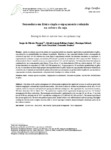Por favor, use este identificador para citar o enlazar este ítem:
http://www.infoteca.cnptia.embrapa.br/infoteca/handle/doc/997702Registro completo de metadatos
| Campo DC | Valor | Lengua/Idioma |
|---|---|---|
| dc.contributor.author | PROCÓPIO, S. de O. | pt_BR |
| dc.contributor.author | BALBINOT JUNIOR, A. A. | pt_BR |
| dc.contributor.author | DEBIASI, H. | pt_BR |
| dc.contributor.author | FRANCHINI, J. C. | pt_BR |
| dc.contributor.author | PANISON, F. | pt_BR |
| dc.date.accessioned | 2014-10-20T11:11:11Z | pt_BR |
| dc.date.available | 2014-10-20T11:11:11Z | pt_BR |
| dc.date.created | 2014-10-20 | pt_BR |
| dc.date.issued | 2014 | pt_BR |
| dc.identifier.citation | Revista Agro@mbiente On-line, v. 8, n. 2, p. 212-221, maio/ago., 2014. | pt_BR |
| dc.identifier.issn | 1982-8470 | pt_BR |
| dc.identifier.uri | http://www.infoteca.cnptia.embrapa.br/infoteca/handle/doc/997702 | pt_BR |
| dc.description | RESUMO: Ajustes no arranjo espacial das plantas de soja podem refletir em aumentos significativos na produtividade de grãos, sem alterações na sustentabilidade dos sistemas de produção. Objetivou-se com o presente trabalho avaliar o desempenho da cultivar de soja BRS 294 RR cultivada em fileira dupla e espaçamento reduzido, em diferentes densidades de semeadura. O experimento foi realizado a campo, em Londrina, PR, durante o período de novembro de 2011 a março de 2012. Utilizou-se o delineamento de blocos completos ao acaso, em esquema fatorial 5x2, com três repetições. Os tratamentos foram formados pela combinação de cinco espaçamentos entre fileiras (19 cm; 38 cm; 57 cm; fileira dupla de 19/38 cm; e fileira dupla de 19/57 cm) e de duas densidades de semeadura (375.000 e 562.500 sementes ha-1). O espaçamento de 19 cm reduziu a produtividade de grãos de soja. A semeadura em fileira dupla proporcionou produtividade de grãos similar aos espaçamentos tradicionais utilizados na cultura da soja. O aumento na densidade de plantas não resultou em incrementos na produtividade de grãos de soja em todos os espaçamentos avaliados, demonstrando a alta plasticidade fenotípica da cultivar avaliada. ABSTRACT: Alterations in the spatial arrangement of soybean plants might provide significant increases in soybean grain yield, without changing the sustainability of production systems. This research aimed to evaluate the performance of the BRS 294 RR soybean cultivar in twin row and narrow row spacing and different seeding rates. The experiment was carried out in Londrina, PR, from November 2011 to March 2012. The randomized complete block experimental design was used in a 5x2 factorial arrangement with three replications. The treatments were formed by combining five row spacings (19 cm, 38 cm, 57 cm, twin row of 19/38 cm, and twin row of 19/57 cm) with two seeding rates (375,000 and 562,500 seeds ha-1). The narrow row reduced the soybean grain yield. The twin row produced grain yields similar to those seen with traditional soybean spacing. The higher seeding rate did not result in higher soybean yields in all row spacings evaluated, demonstrating the phenotypic plasticity of the cultivar evaluated. | pt_BR |
| dc.language.iso | por | pt_BR |
| dc.rights | openAccess | pt_BR |
| dc.title | Semeadura em fileira dupla e espaçamento reduzido na cultura da soja. | pt_BR |
| dc.type | Artigo de periódico | pt_BR |
| dc.date.updated | 2017-10-31T11:11:11Z | pt_BR |
| dc.subject.thesagro | Soja | pt_BR |
| riaa.ainfo.id | 997702 | pt_BR |
| riaa.ainfo.lastupdate | 2017-10-31 -02:00:00 | pt_BR |
| dc.contributor.institution | SERGIO DE OLIVEIRA PROCÓPIO, CPATC | pt_BR |
| dc.contributor.institution | ALVADI ANTONIO BALBINOT JUNIOR, CNPSO | por |
| dc.contributor.institution | HENRIQUE DEBIASI, CNPSO | por |
| dc.contributor.institution | JULIO CEZAR FRANCHINI DOS SANTOS, CNPSO | por |
| dc.contributor.institution | FERNANDO PANISON. | por |
| Aparece en las colecciones: | Artigo de divulgação na mídia (CNPSO)  | |
Ficheros en este ítem:
| Fichero | Descripción | Tamaño | Formato | |
|---|---|---|---|---|
| Semeaduraemfileiraduplaeespacamentoreduzidonaculturadasoja.pdf | 430.15 kB | Adobe PDF |  Visualizar/Abrir |









